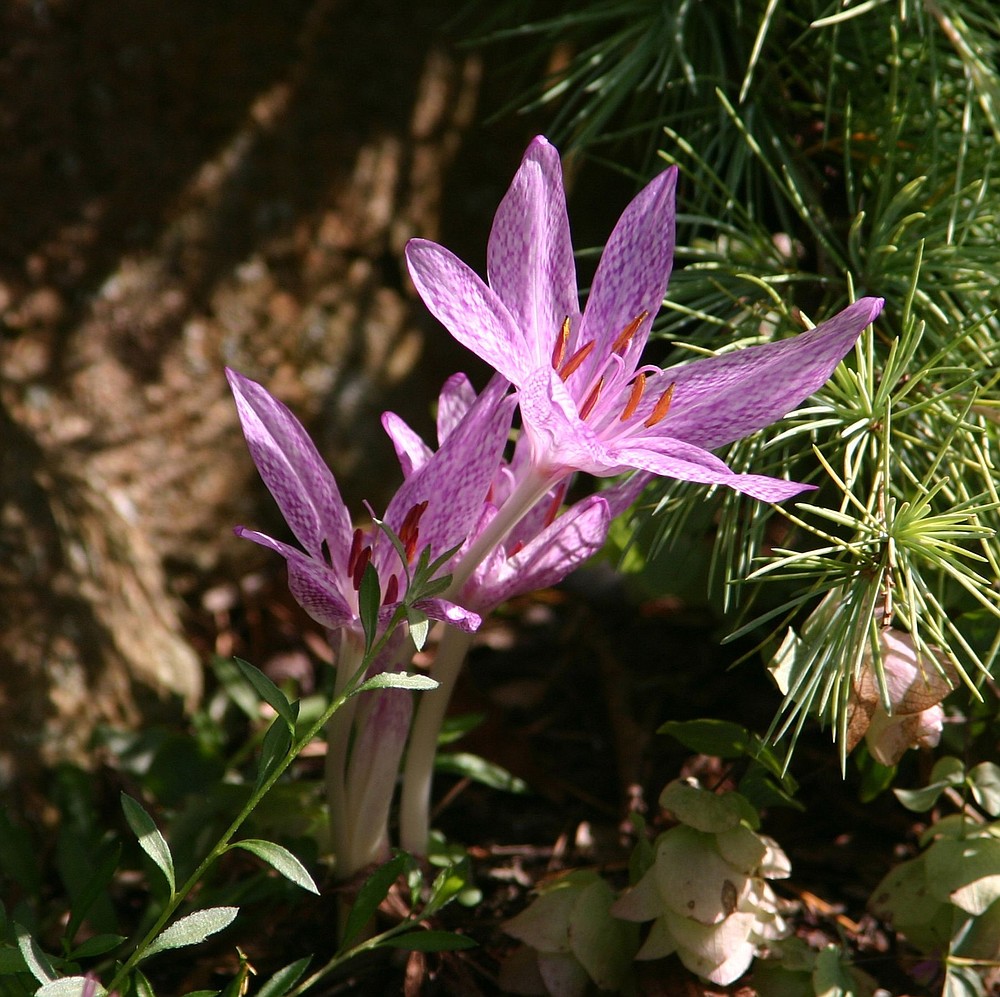Mid to late autumn is a unique interlude in the Northwest garden. Summer is a thing of the past and winter is on the horizon. The brash onslaught of early fall color has diminished and in its stead the garden is awash in complex and shifting textural patterns. While other areas of the country grow barren with the onset of cold weather, we take on a shaded palette of color hues. Even the Northwest lawn turns a crisp, cool green in gratitude for autumn rains.
Until we enter an extended period of frigid air and the soil succumbs to chilling temperatures, turf grass continues to grow. Warm-season lawns do not need to be mowed once winter weather sets in, although fescue in the grass seed mix extends the growth season by a couple of weeks.
Despite the slowing of life in the garden, we need to take care of certain jobs before the first frost. Our immediate concern is to bring all tender plants into a sheltered area of the garden, protect potted plants that are marginally hardy and tuck tender perennials into their garden beds with winter mulch.
Toss bedding plants
The first step in committing the rest of your garden to winter preparation is to remove any dead or dying annuals, as well as spent perennial plant material. Most tender bedding plants will be well past flowering and they will never look any better than they do right now. Add them to the compost heap. However, remember this mantra: Never add diseased or insect-infested foliage to your compost.
If you planted cool-season pansies and kale early in the fall, clean them up by removing spent flower heads and withered, weather-beaten foliage. Cut pansies back to within a couple of inches of the ground and they will very likely give you another flush of bloom before bitter winter weather arrives. If you have dahlias planted out in the garden, the time to cut them back to the ground is after a killing frost. If you are not going to store them for the winter, cover them with a deep layer of mulch.
Last winter, after wind, chilling rain and unprecedented snowfall in every area of Southwest Washington, I received a barrage of letters and e-mails about winter preparation for next year. In areas that receive winter snow and ice storms, fall and early winter is the time to wrap shrub branches with twine to prevent them from breaking under the weight. Start by securing twine to the trunk of the shrub near the base and wrap upward and out in a spiral. Once you reach the top, tie the twine to the trunk again and spiral your way back down.
Trim any large hedges at this time and make sure that all hedges are clipped so that the sides taper upward. Keep the widest part of the hedge at the base and the thinnest width at the top. This way, snow will not accumulate on top and split the hedge open in the middle, but will fall more readily off the sides. If you have a hedge of yew or any other needled evergreen, tie in or remove branches that look like they might catch and hold quantities of snow.
Protect tender plants
Take the time to protect any half-hardy or tender plants before cold weather comes to the garden. Mulch these plants with compost, bark or straw to create a blanket of protection over the root system. Most roses will benefit from an application of straw and mulch, mounded about 5 or 6 inches deep at the base of the rose canes. If you still have last season plant purchases sitting out in the open, try to get them in the ground now. Plants do better in the winter if they are in the ground rather than in a one-gallon pot waiting for spring.
The pace of garden chores slows down now so you might find the time to think ahead to next year. Have lawnmower and power tools serviced and clean up garden tools. Remove any plants in pots from the fall line of the roof of the house and bring tender potted plants into a protected area.
Whatever you do, take a moment to modify your perspective along with the changing season. Look around the garden with new eyes. The arrival of winter brings about a spare, unadulterated beauty like no other season of the year.
Robb Rosser is a WSU-certified Master Gardener. Reach him at Write2Robb@aol.com.



